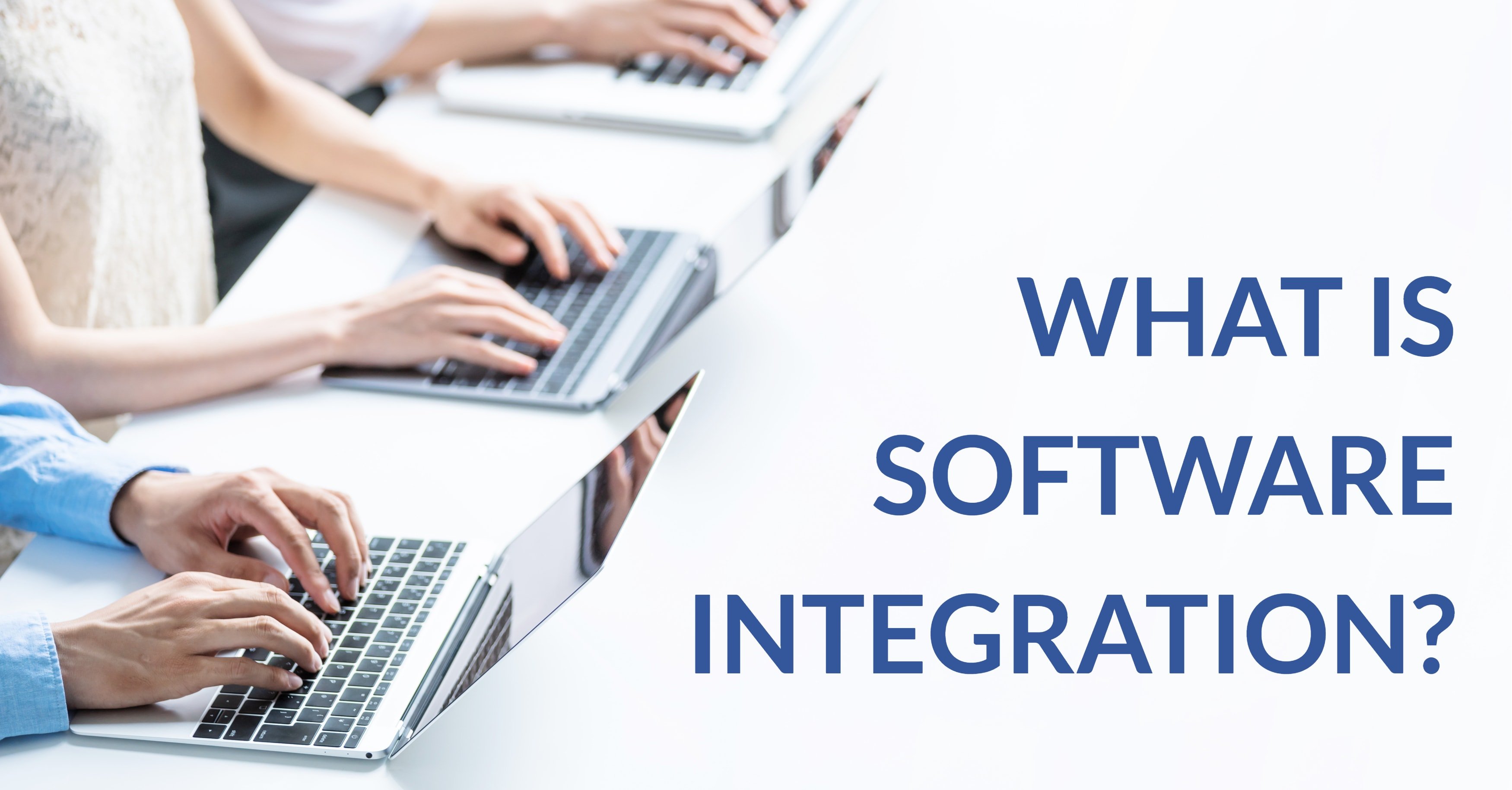Software Integration, Explained
Manufacturers often maintain multiple software systems for their front and back offices without realizing that there’s a better way to run their enterprise. Keeping ERP, CRM and other systems separated results in information silos, gaps in processes and limited visibility. The key to maximizing the value of multiple platforms and streamlining operations from end to end of your enterprise is software integration.
However, many businesses are unaware of software integration or struggle to understand what it means and how it can be executed in their workplace. We’re here to give you the 411 on systems integration, from a definition to critical benefits and integration methodology.
Integration Description
Imagine what would happen if your sales reps started working on the shop floor, operating advanced machinery and equipment. Chances are, things won’t go so well. Someone might reroute production lines incorrectly, order the wrong raw materials or simply stand around, no idea where to start.
This absurd scenario actually mimics what happens when enterprises operate separate software platforms. ERP isn’t for front-end employees. When salespeople must login to ERP to acquire inventory data or pricing, they’re likely to get lost or push the wrong buttons, wasting time and sacrificing the integrity of your data. Furthermore, in order to provide valuable information throughout your enterprise, users must manually enter data into multiple interfaces, which also wastes time and puts your company at risk of human error.
Back-end platforms like ERP work quite differently from CRM, eCommerce and Marketing Automation software. Though users often need access to both front and back-end data, they also need to stick with their familiar platforms. How do we maintain this delicate balance?
Software integration is the solution to this conundrum. An integration puts your software systems in conversation with each other. When information is input into one instance, it automatically shows up in the other one. As data is modified, both systems are updated to reflect the changes.
Consider this example: One of the most popular integrations is between ERP and CRM. An essential process that is often streamlined through this integration is order processing. Customer data from your CRM instantly transfers into the ERP system, where an order is made. As updates are made to the order or customer data, these changes are displayed in both interfaces.
Therefore, CRM and ERP users can continue to utilize their familiar dashboards and modules while receiving relevant back and front-end data. Since this information is automatically transferred between both platforms, there’s no manual data entry. (You can view this process in action in our Unity video demos.)
Essentially, systems integration is the process of automatically transferring data back and forth between various software platforms to promote optimal visibility and efficiency.
Integration Benefits
Some of the advantages of connecting your software platforms have already been pointed out, such as the elimination of dual data entries and better efficiency. But there are some other major benefits worth noting:
- Customer Experiences: As customer demands grow, it’ll become increasingly important to provide personalized customer experiences and optimize products and services. With an integration, back-end users can leverage customer feedback captured in the CRM to align products with customer demands. Front offices can instantly provide customers with updates on orders and accurate pricing and inventory information by using ERP data.
- Eradicate Department Silos: Integrations create a central hub of enterprise data, enabling users throughout departments to collaborate for overall business improvements. Having data all in one place improves accuracy and ensures users are all on the same page.
- Best-of-Breed Approach: An integration empowers businesses to connect the best software into one solution. Often, a vendor that specializes in back-end software won’t offer sophisticated front-end functionality, or vice versa. Therefore, it’s smarter to take a best-of-breed approach, which means that you select the best systems for various functions and join them together through an integration. This gives you a single source of truth while providing every user with optimal tools.
How to Integrate Systems
An integration sounds great, but is it worth the hassle? Considering that the modern integration process involves virtually no hassle, yes! The early days of software integration consisted of point-to-point, or app-to-app, connections. This process required extensive coding as well as constant maintenance and troubleshooting. Furthermore, the cost of all this work made integration impossible for small to midsize businesses (SMBs).
Integrations have come a long way. A business can even connect their software with zero coding. Out-of-the-box integration applications can powerfully connect software hosted in the cloud or on-premises. They simply have to be installed by an expert. The deployment can be as quick as a few days, providing two-way data transfers instantly.
But like any software project, your specific company needs must be taken into account. Are there specific transfer points that need to be added to your solution? Will any workflows require some tweaking to make the most of your integration? How will users learn to take advantage of the newly integrated system? These details can be worked out and executed with the help of a consultant. Systems integration is easier and more affordable than ever, making it a no-brainer for businesses of all sizes.
Wrap Up
At this point, you’re probably accustomed to confusing acronyms and terminology in the tech world. But software integration is different. The definition is in the name—a software integration integrates your software! Think of its sensible name as a reflection of the solution’s simplicity. A software integration isn’t the convoluted coding project it once was. It’s a quick, surefire method of enhancing productivity and increasing software ROI.
To powerfully connect your enterprise systems, team up with the experts at Datix. An Epicor Gold Partner, we have a reputation not only for ERP implementations but for integrations as well. Our Unity integration application is a pre-built solution that seamlessly connects your ERP software with CRM, eCommerce or Marketing Automation systems. Our consultants quickly install the solution and manage errors and updates after go-live. Additionally, we perform any necessary customizations to ensure it aligns with your unique business needs. With no coding or hassle, businesses can form a connected enterprise.
To learn more about software integration, check out our e-book and Unity video demos, and get in touch with the experts at Datix today!
{{cta(‘770c1544-d87d-4acb-9fc4-7a25e1385094′,’justifycenter’)}}



